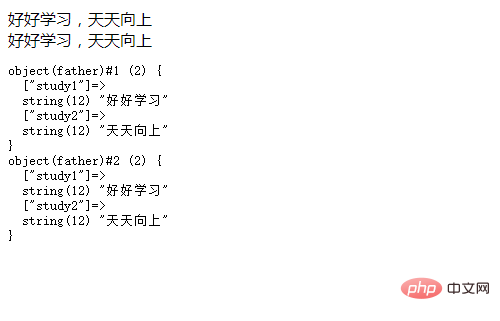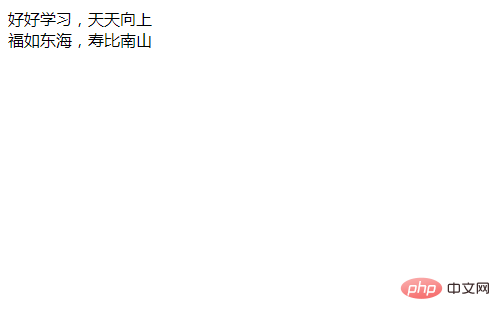
In the previous article, I brought you "Namespace Definition and Use in PHP (Detailed Examples)", which introduced the definition and use of namespace in PHP in detail. This article This article continues to show you the relevant knowledge in PHP, about the use of clone keyword. I hope everyone has to help!

In our previous study, there were many keywords, such as $this, $new, etc. Today we continue to look at the keyword clone, which is also commonly used in PHP. Before learning the clone keyword, we need to know that the object model in PHP calls objects by reference, but we also need to create a copy of the object. The purpose is to avoid affecting the object copy when the original object changes. .
At this time, if you use the new keyword, you can re-create the object, and then assign the same value to the attribute. It can also play the role of creating a new copy, but this method is not only troublesome but also error-prone. , at this time we hope that PHP can have an identical object, and the two do not interfere with each other, which is what we think of as a clone. How should this be achieved? Don't panic, keep watching.
<strong><span style="font-size: 20px;">clone</span></strong>Keywords
We hope There is a copy that does not interfere with the original object. In PHP, you can clone the object through the clone keyword.
cloneThe syntax format of the keyword is as follows:
克隆对象名称 = clone 原对象名称;
You can understand the cloning action as copying the memory area of the object, and the assigned object is the same as the original Objects are independent of each other. And the member methods, properties and values between them are exactly the same.
Next, let’s take a look at the capabilities of clone through a simple example. The example is as follows:
<?php
class father{
public $study1, $study2;
public function __construct($study1, $study2){
$this -> study1 = $study1;
$this -> study2 = $study2;
}
public function output(){
echo $this -> study1.','. $this -> study2.'<br>';
}
}
$obj = new father('好好学习', '天天向上');
$obj2 = clone $obj;//克隆$obj
$obj -> output();
$obj2 -> output();
echo '<pre class="brush:php;toolbar:false">';
var_dump($obj);
var_dump($obj2);
?>Output result:

What we need to note is that if you use = to assign an object to a variable, then what you get will be a reference to the object. Changing the value of the attribute through this variable will affect the original object. So you still have to use clone, changing the attribute value will not affect the original object.
Through the above examples, we already know how to clone an object for our use. However, after the object is successfully cloned, its properties, member methods, and values will be exactly the same as the original object. Then At this time, we just say that changing attributes will not affect the original object, but how should we reassign the attributes of the cloned copy members? At this time we will use the __clone() method in the PHP magic method.
<strong><span style="max-width:90%">__clone()</span></strong>Method
__clone() method cannot be called directly. Only clone has __clone(). Only when an object is cloned through the clone keyword, Only then can the __clone() method be called through this cloned object.
<?php
class father{
public $name, $url;
public function __construct($name, $url){
$this -> name = $name;
$this -> url = $url;
}
public function output(){
echo $this -> name.','.$this -> url.'<br>';
}
public function __clone(){//通过__clone()来更改新对象的属性
$this -> name = '福如东海';
$this -> url = '寿比南山';
}
}
$obj = new father('好好学习', '天天向上');
$obj2 = clone $obj;
$obj -> output();
$obj2 -> output();
?>
__clone() in the class with access rights of private (private). method, it can achieve the purpose of prohibiting cloning.
PHP Video Tutorial" to learn more about PHP knowledge.
The above is the detailed content of The use of clone keyword and __clone() method in PHP (detailed examples). For more information, please follow other related articles on the PHP Chinese website!




